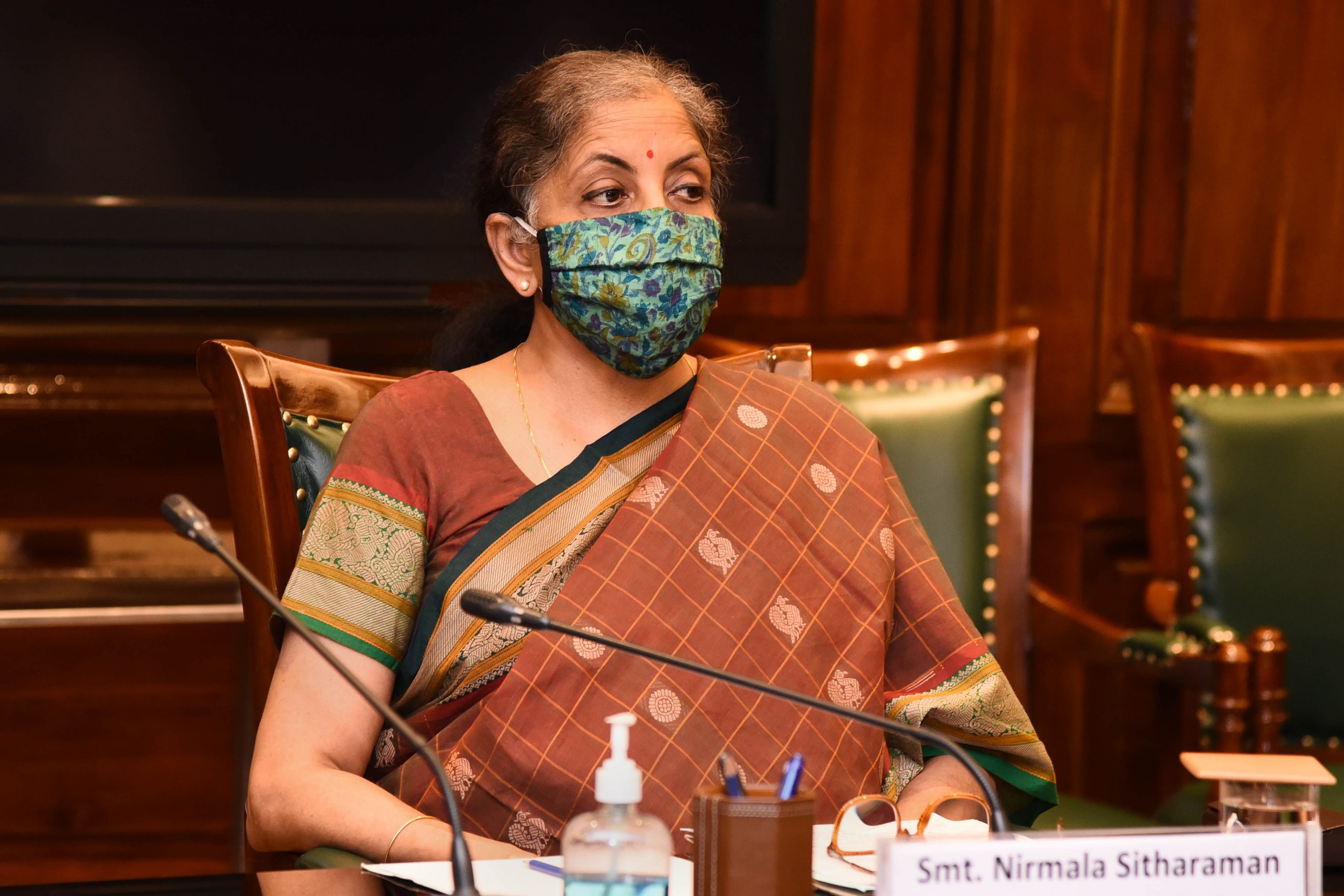An ‘Act of God’ is how Finance Minister Nirmala Sitharaman has described the COVID-19 crisis and its fiscal fallout. The pandemic and the consequent nationwide lockdown crippled India’s economy and the GDP growth rate for the April-June quarter was -23.9%. Put simply, Indian economy contracted by nearly a fourth. This is the sharpest contraction on record, ever. Even after the lockdown was lifted in a phased manner, factories have been running at sub-optimal capacities, lakhs of salaried jobs have vanished, there has been unaccounted pain for the daily wagers and workers in small businesses.
So, as economic activity was halted for months, there has been a severe shortage in the Centre’s collections under the Goods and Services Tax (GST). For each of the five months of this fiscal, total GST collections have been below the figure in corresponding months of last fiscal.

GST is a single, unified indirect tax implemented in July 2017; it subsumed all earlier state and central levies. We pay this tax on any and all goods or services we purchase.
With the Centre’s GST collections dipping significantly since March this year, its ability to compensate state governments for losses – as defined under the GST architecture – has diminished. And this has led to an ugly spat between the Central and state governments over how to fund this compensation and who should take loans to make good the difference.
Here’s the latest Centre-State spat explained in 8 points
1) GST: GST is a single indirect tax with multiple slabs for the entire country, as opposed to multiple central and state levies earlier. It has subsumed central indirect taxes such as excise and customs tax and state level levies such as value added tax, sales tax, octroi and luxury tax etc. Some product categories are not under the GST umbrella, including alcoholic goods, petroleum and petroleum products. All goods and services are divided into tax slabs and five categories of goods – aerated drinks, pan masala, tobacco, automobiles and coal – attract an additional cess. The cess collected from the sale of these products is used to compensate states for revenue loss.
2) Compensation: At the time of GST rollout in July 2017, the Centre had assured all states that it will fully compensate them from any losses arising due to the transition to GST for the next five years or till 2022. The compensation payable by the Centre is the projected revenue (at a compound growth rate of 14% from the base figure of 2015-16) of states for each year till 2022, minus the actual revenue..
3) Gap: The Centre has now said that due to COVID-19 and resultant lull in economic activities, there has been a steep decline in GST revenues. The expected shortfall in 2020-21 could be nearly Rs 3 lakh crore. The collection from the compensation cess has been estimated at a little less than Rs 70,000 crore this fiscal, leaving a gaping hole of Rs 2.3 lakh crore. This is the sum over which the Centre and the states are engaged in a tug of war. Now, the Centre has put two options on the table for states to fund this gap and each involves increased borrowings by state governments instead of the Centre doing the borrowing.
4) First option: The first option provided by the Centre to state governments is that the shortfall arising out of GST implementation, estimated at Rs 97,000 crore, be borrowed by them through issue of debt under a Special Window coordinated by the Ministry of Finance. This Rs 97,000 crore is the estimated shortfall due to just implementation of GST and without the impact of the pandemic. The interest on these borrowings will be paid from the cess until the end of the transition period. After the transition period, principal and interest will also be paid from proceeds of the cess, by extending the cess beyond the transition period. State governments will not be required to service the debt or to repay it from any other source. This stipulation assumes that the arrangement whereby cess collected under GST compensates for states’ loss of revenue would be extended beyond the current deadline of 2022. According to analysts at the State Bank of India, this option also allows a borrowing of 0.5% extra for states under existing limits so that overall state fiscal deficit financing can reach maximum 5.5% of GDP versus the standard 3%.
5) Second option: The entire shortfall of Rs 2.35 lakh crore (including the COVID-impacted portion) may be borrowed by states through issue of market debt. The Centre will repay principal on such debt from future cess proceeds. But the state governments will have to bear the burden of interest on such loans.
SBI analysts have said that in this option, the state fiscal deficit financing can reach maximum 5.3% of GDP.
6) States stressed: According to the SBI analysis, state governments are already stressed since a shrinking economy has forced them to borrow much more than last year. At an overall level, states’ market borrowings had already gone up by 49% or Rs 92,000 crore between April and September one this fiscal compared to last fiscal. Karnataka saw the maximum increase in market borrowings at over five times the level last year while for Nagaland, the borrowings had gone by two-and-a-half times.
7) States refuse both options: Opposition states including Kerala, Punjab, Delhi and West Bengal have rejected both the borrowing options provided by the Centre. They have said Centre asking states to borrow to meet GST shortfall is a breach of cooperative federalism and it should, instead, take the additional borrowings needed for compensating states.
8) Politics over GST: Some opposition chief ministers including Rajasthan’s Ashok Gehlot and Jharkhand’s Hemant Soren, have written to Prime Minister Narendra Modi, pointing out that Centre asking states to borrow equals sovereign default. Kerala has reminded the Centre of its “moral obligation” to compensate states. West Bengal Finance Minister Amit Mitra has wondered publicly whether the Centre’s reluctance on compensation is an “act of fraud”.






